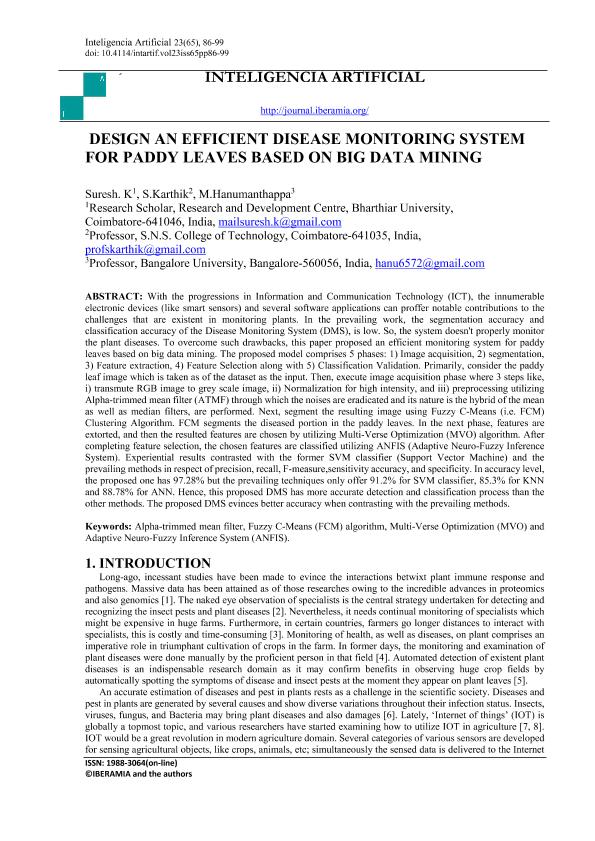| 520 | | | $aWith the progressions in Information and Communication Technology (ICT), the innumerable electronic devices (like smart sensors) and several software applications can proffer notable contributions to the challenges that are existent in monitoring plants. In the prevailing work, the segmentation accuracy and classification accuracy of the Disease Monitoring System (DMS), is low. So, the system doesn't properly monitor the plant diseases. To overcome such drawbacks, this paper proposed an efficient monitoring system for paddy leaves based on big data mining. The proposed model comprises 5 phases: 1) Image acquisition, 2) segmentation, 3) Feature extraction, 4) Feature Selection along with 5) Classification Validation. Primarily, consider the paddy leaf image which is taken as of the dataset as the input. Then, execute image acquisition phase where 3 steps like, i) transmute RGB image to grey scale image, ii) Normalization for high intensity, and iii) preprocessing utilizing Alpha-trimmed mean filter (ATMF) through which the noises are eradicated and its nature is the hybrid of the mean as well as median filters, are performed. Next, segment the resulting image using Fuzzy C-Means (i.e. FCM) Clustering Algorithm. FCM segments the diseased portion in the paddy leaves. In the next phase, features are extorted, and then the resulted features are chosen by utilizing Multi-Verse Optimization (MVO) algorithm. After completing feature selection, the chosen features are classified utilizing ANFIS (Adaptive Neuro-Fuzzy Inference System). Experiential results contrasted with the former SVM classifier (Support Vector Machine) and the prevailing methods in respect of precision, recall, F-measure,sensitivity accuracy, and specificity. In accuracy level, the proposed one has 97.28% but the prevailing techniques only offer 91.2% for SVM classifier, 85.3% for KNN and 88.78% for ANN. Hence, this proposed DMS has more accurate detection and classification process than the other methods. The proposed DMS evinces better accuracy when contrasting with the prevailing methods. |


